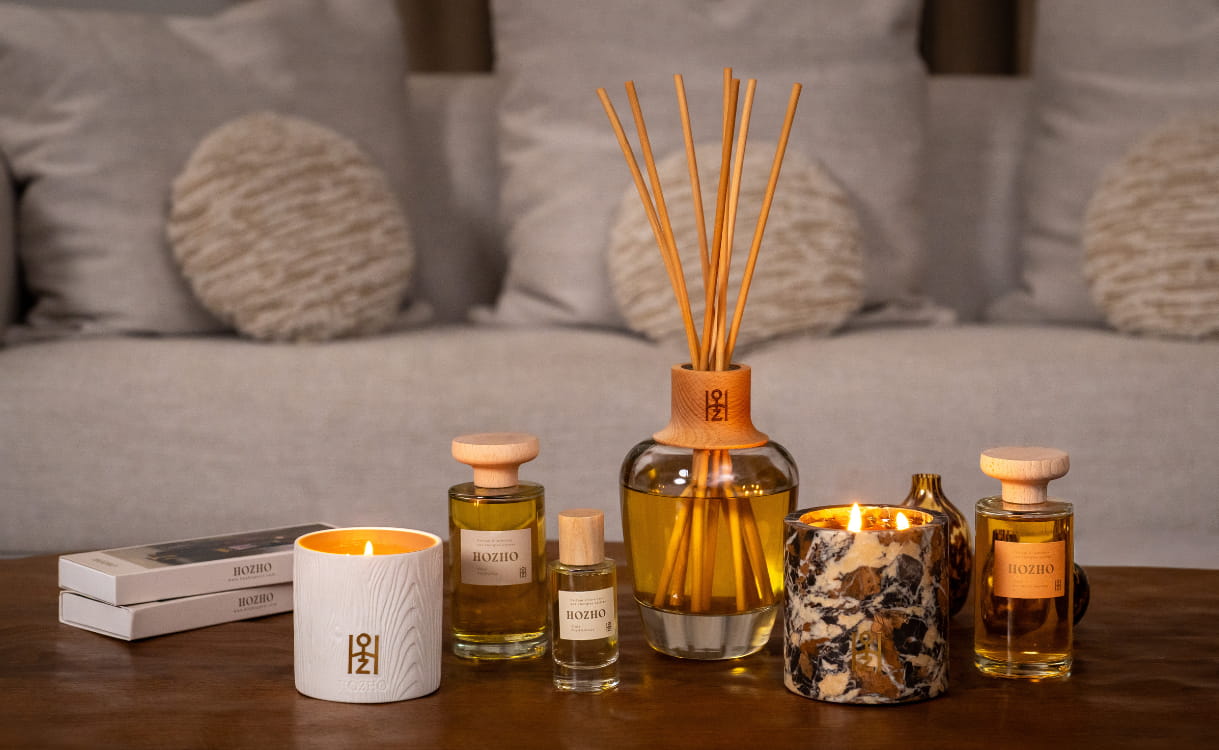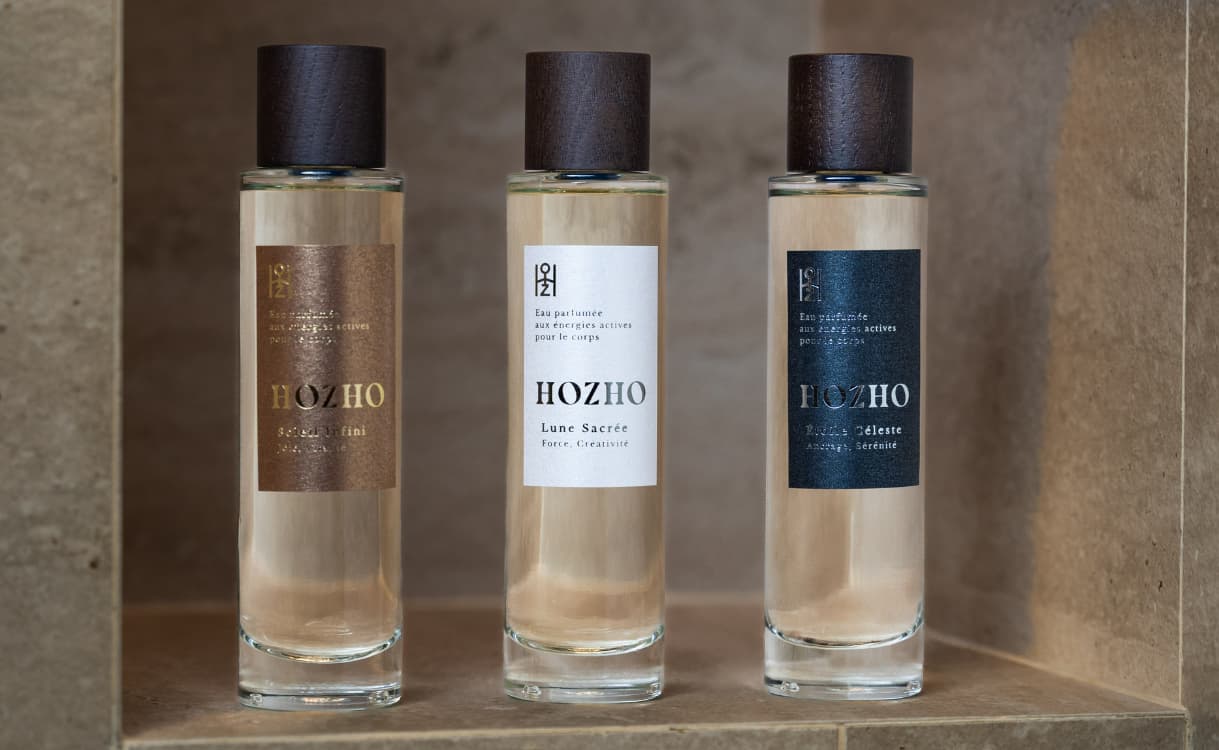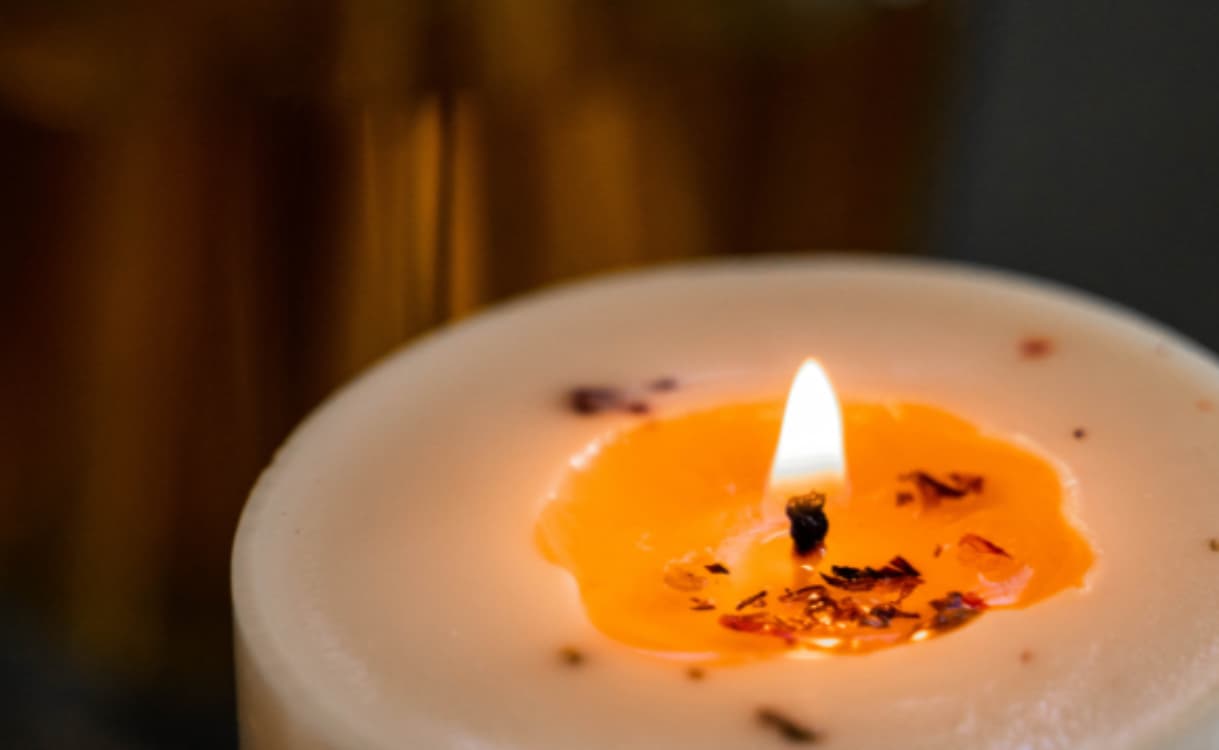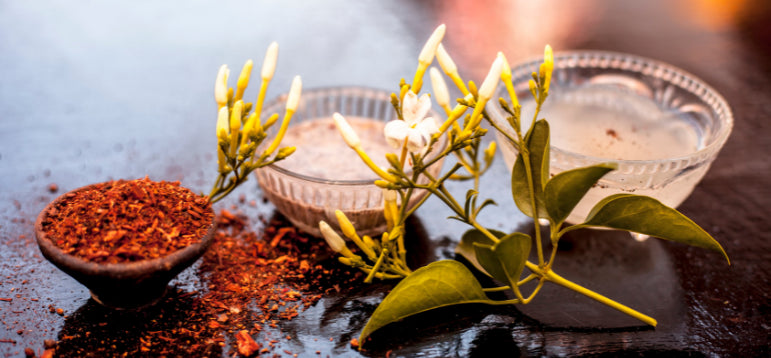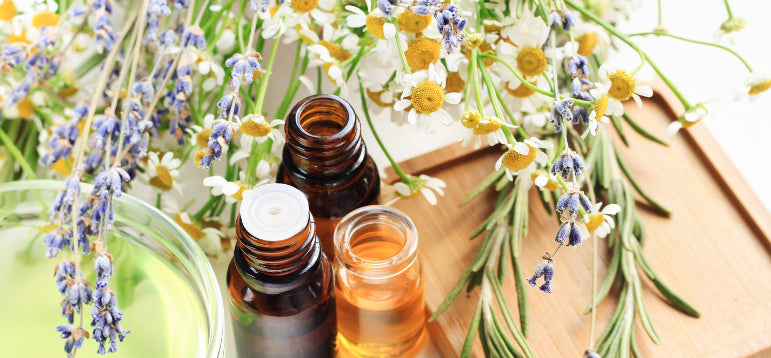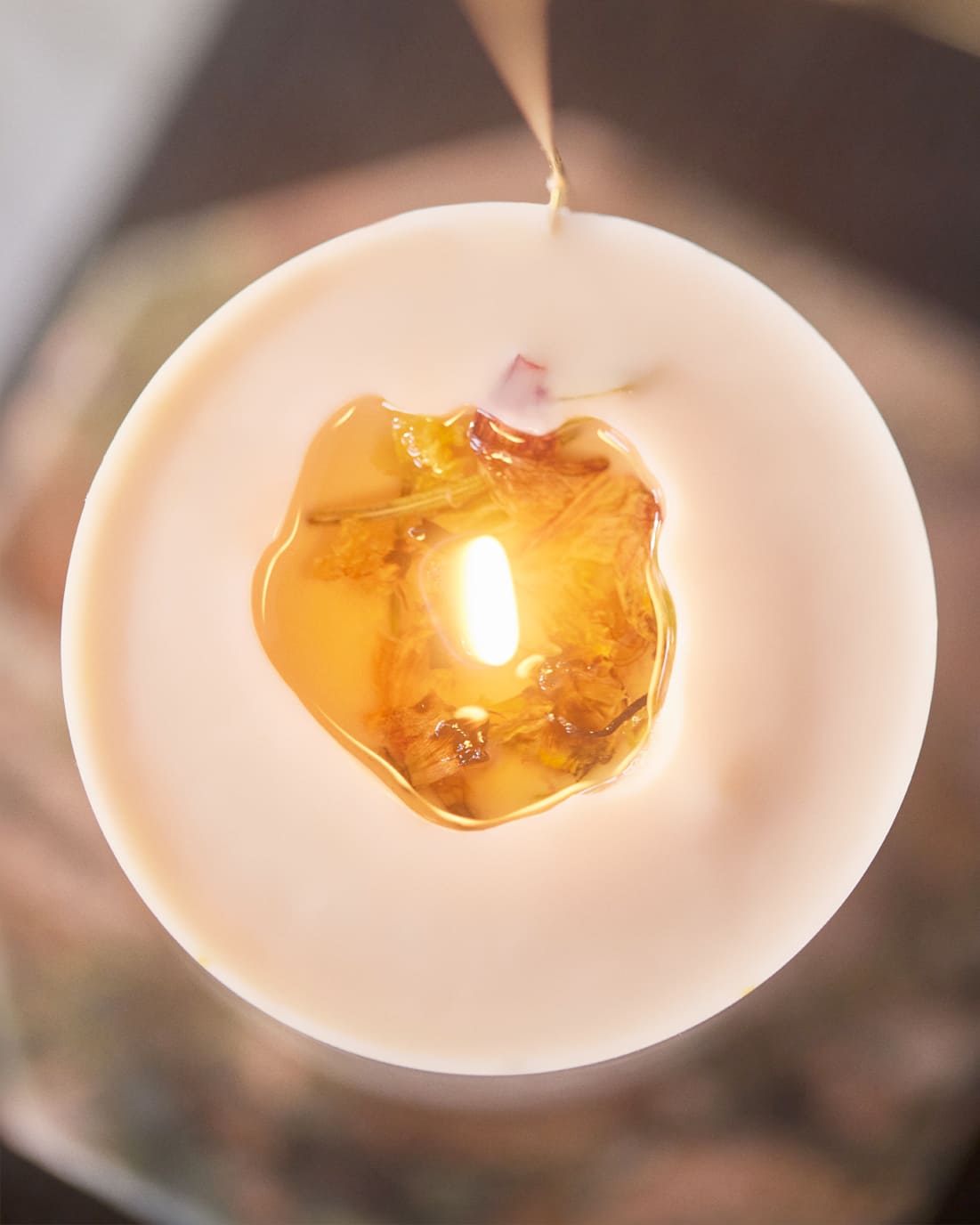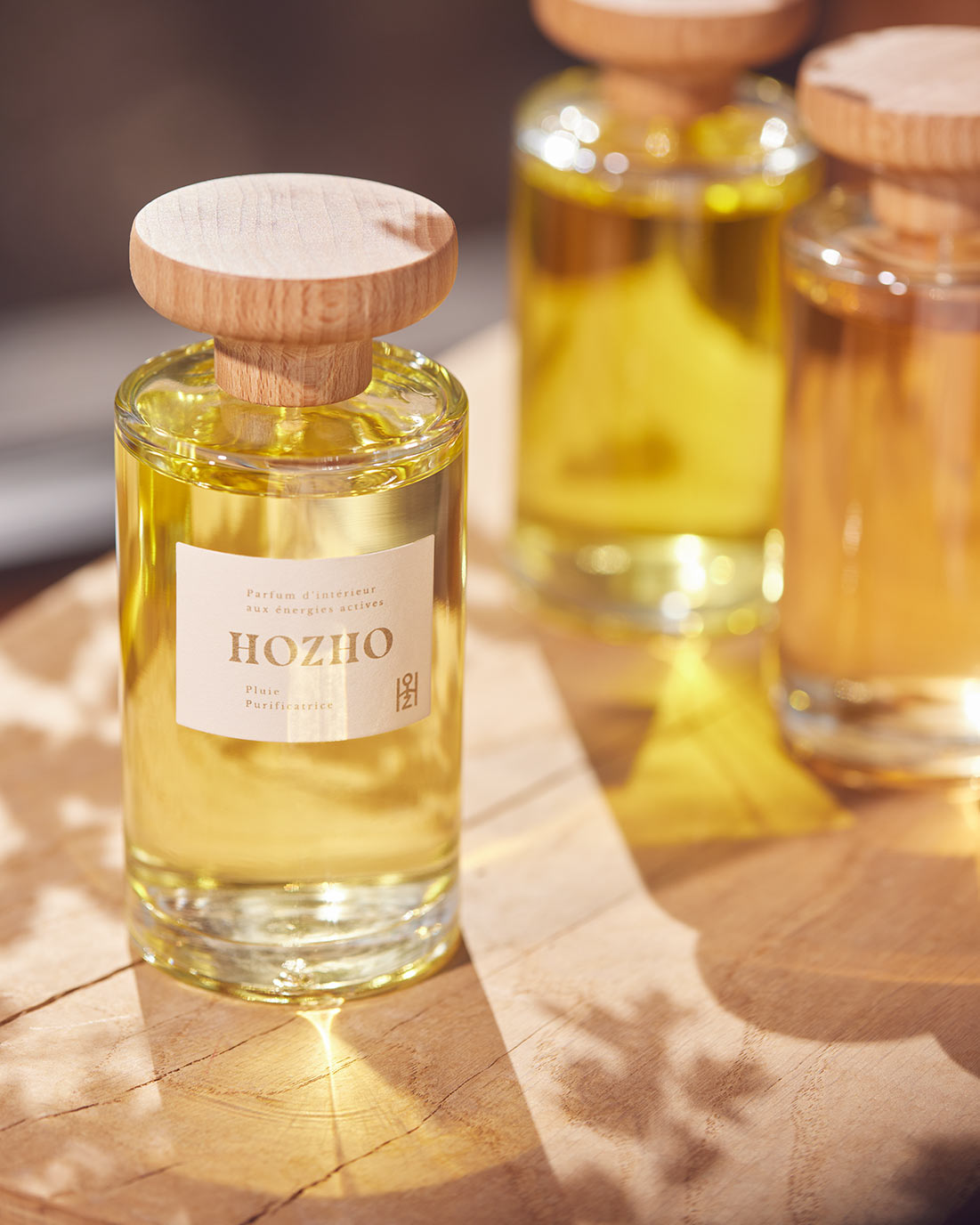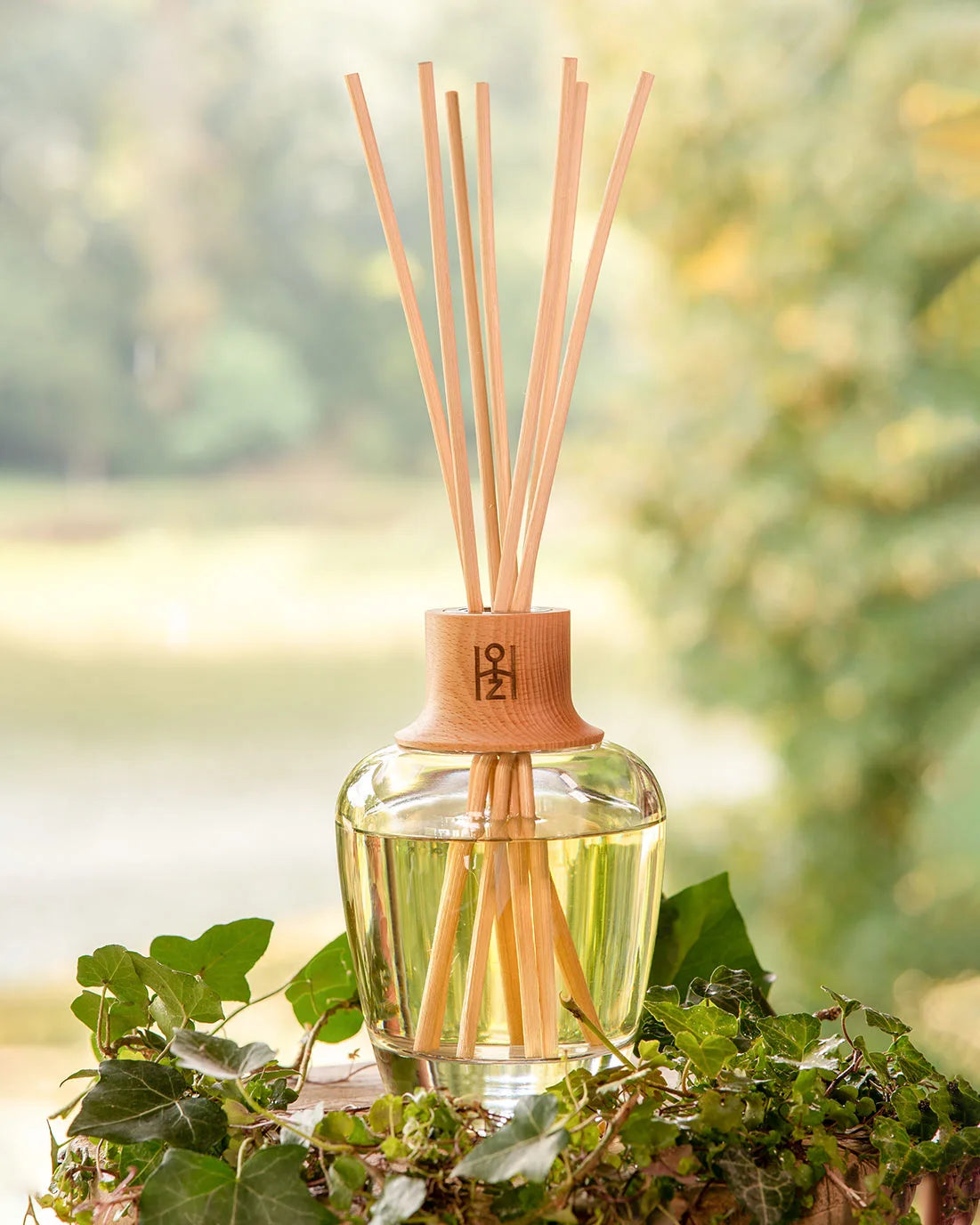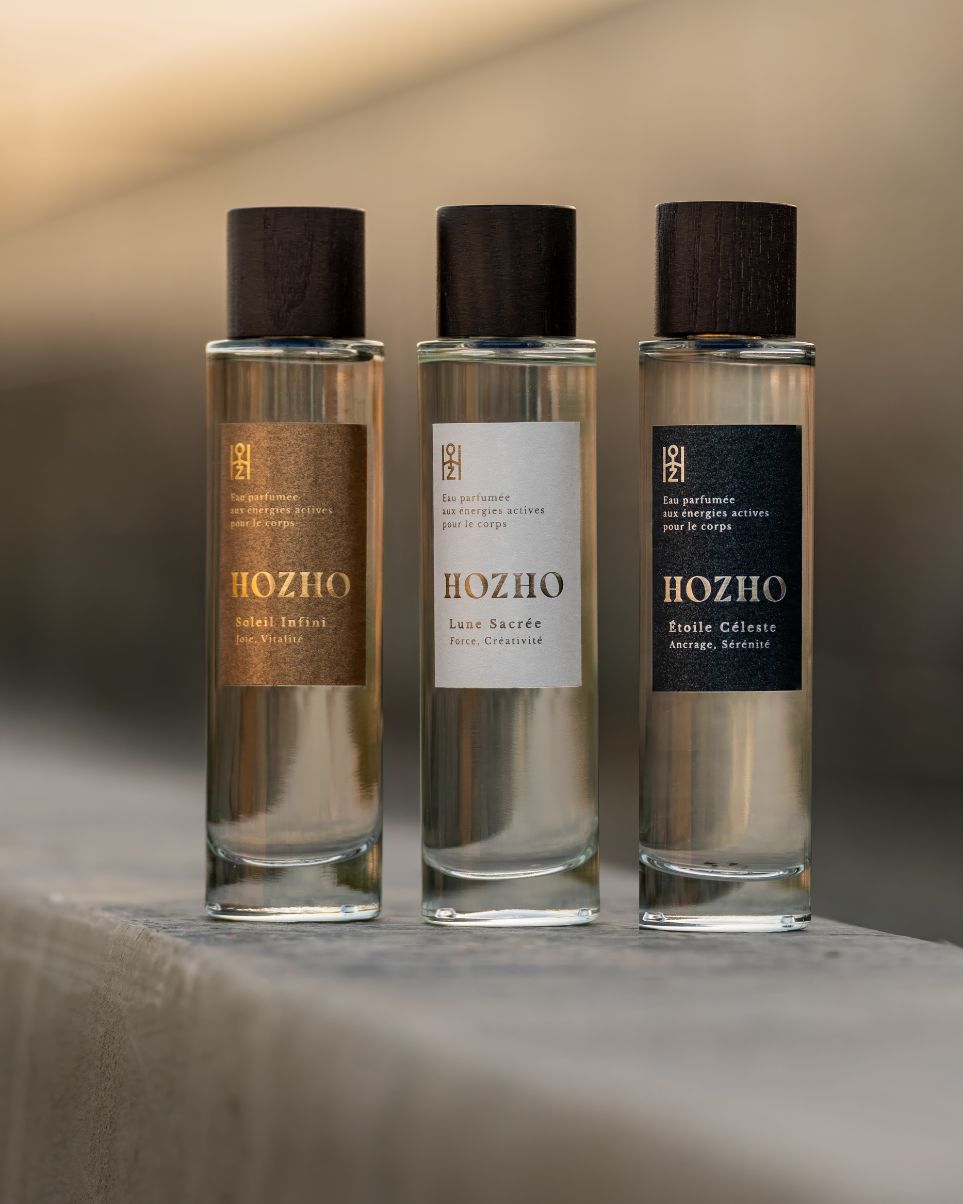The Spiritual Virtues of Myrrh: Dive into the Magic of this Sacred Plant
Myrrh is one of the oldest incense with countless spiritual, energetic, cosmetic and therapeutic virtues . Solid in its raw state, it can be transformed into essential oil, perfume or balm to accompany your senses on true olfactory, intimate and sensual journeys.
Inspired by ancient traditions, at HOZHO, we've created energy treatments for the home made with premium myrrh, cedarwood, and patchouli. These ranges, created to protect your home, will offer you moments of infinitely soothing spiritual well-being.
Discover in this article the spiritual and energetic properties of myrrh .
Myrrh, a sacred plant with a characteristic fragrance
Myrrh is a compound formed by the resin and gum of the myrrh tree, a shrub of the Burseraceae family, native to East Africa and the Arabian Peninsula. It fills with sap and flowers in late summer. It is at this time that its trunk becomes covered with small protuberances from which oozes the precious gum resin . These tear-shaped secretions then harden in the open air to form solid aggregates of amber color.
Myrrh incense grains can then be burned as is using a hot coal or distilled to create an essential oil . Its essence gives off a balsamic (the myrrh tree is also called balsam) and opulent scent with warm notes characteristic of oriental perfumes.
Sometimes mixed with wine, as in ancient Greece, myrrh is also closely linked to sensuality . Its popularity since antiquity has led to a flourishing trade between Yemen, Oman, Somalia, and the greatest powers of the time. Traded in the same way as gold and silk, myrrh oil and incense were long reserved for the wealthy classes or used in liturgical rituals.
The magical properties of myrrh in ancient wisdom
Also known as the “ myrrh of India ,” this sacred plant is found in ancient spiritual practices . In Egypt, myrrh was already used in mummification processes, but also as a perfume and offering to the god Re. It is also found in ancient Greece and later in Ovid’s Metamorphoses. According to the Latin poet, myrrh owes its name to Myrrha, the daughter of the Cypriot king Cintras, who was transformed into a tree by the gods. It was her tears that gave birth to the precious myrrh with its magical, medicinal, and culinary properties .
A holy anointing oil among the Hebrews, myrrh is also present in the Bible. It is part of one of the gifts given by the Magi to the Infant Jesus. Throughout history, its properties on the body (analgesic, anti-inflammatory, anti-infectious, antiviral, and antiparasitic) are also elevated to the spirit and places.
In ancient wisdom, myrrh was used to purify spaces, harmonize energies, and communicate with the gods. It is also credited with aphrodisiac powers in Egypt, Greece, Rome, Japan, India, China, and the Arab world.
By turns sacred incense, divine offering, carnal perfume or magic remedy, myrrh and its intoxicating fragrances have earned the glory and covetousness of ancient peoples.
Well-being and spiritual virtues of myrrh
With such a rich heritage, myrrh unsurprisingly holds a prominent role in modern spiritual practices . In India, myrrh is particularly used to promote relaxation, concentration, prayer, and deep meditation . It helps access a higher level of consciousness by reconnecting the individual with their innermost emotions and the energies that surround them. Its positive impact on spiritual and emotional well-being is recognized in many disciplines.
Myrrh is thus very present in aromatherapy, hydrolatherapy, phytotherapy and in energy rituals . Its regulating effect on emotions as well as on energies makes it a privileged ingredient to alleviate tensions and mental ruminations. By repelling disturbing energies and freeing your senses, myrrh restores energetic harmony in your living spaces. Its soothing, enveloping and comforting effect is conducive to rest and introspection.
Myrrh essential oil is used in aromatic therapies (aromatherapy and olfactotherapy), meditation, and relaxation practices. Its warm, comforting aromas calm states of stress and hypervigilance, while its energetic active ingredients protect your home from negative energies.
The energetic virtues of myrrh in HOZHO home care
Knowledge of plants and their effects on the body, mind, and energy is based on an ancient heritage. The spiritual and energetic virtues attributed to them often share similarities between peoples, despite the time and distance that separate them. This is the case with myrrh, palo santo, sandalwood, patchouli, and white sage.
A plant dedicated to spiritual purification , in constant connection with vibrational energies , myrrh has always marked a verticality between the intimate and the infinite. Robust, protective and captivating, it protects your home and comforts souls.
As the leading brand of energetic fragrances for the body and home , HOZHO has made myrrh a key component of its many synergies. Enhanced by the properties of patchouli, cedar, and sacred frankincense, which bring balance and mental clarity, it is part of our ranges designed to protect your home.
Scented energy candle, interior diffuser or spray with active myrrh energies , let yourself be carried away on an olfactory and spiritual journey thanks to our unique artisanal creations. Grown and harvested in the Basque Country, our ingredients, non-polluting and non-toxic, are carefully selected by an energy healer. We work with top-quality ingredients and artisans with unique know-how to create exceptional components dedicated to your inner well-being.
Sources:
Veres, O. (2019). Spaces in Between in the Myth of Myrrha: A Metamorphosis into Tree. Acta Universitatis Sapientiae, Philologica , 11, 83 - 92. https://doi.org/10.2478/ausp-2019-0006 .
Coulson, F. (2008). Failed Chastity And Ovid: Myrrha In The Latin Commentary Tradition From Antiquity To The Renaissance. , 7-35. https://doi.org/10.1163/EJ.9789004166714.I-211.6 .
Abdul-Ghani, R., Loutfy, N., & Hassan, A. (2009). Myrrh and trematodoses in Egypt: an overview of safety, efficacy and effectiveness profiles.. Parasitology international , 58 3, 210-4. https://doi.org/10.1016/j.parint.2009.04.006 .

